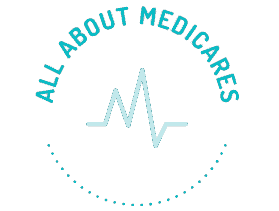This year, 56 million U.S. seniors will pay more for Medicare prescription drug coverage, partly due to a single drug most will not take — Aduhelm, a newly approved, expensive, and controversial Alzheimer’s drug.
In late 2021, the Centers for Medicare and Medicaid Services announced one of the largest increases ever — nearly 15% — to monthly premiums for Medicare Part B, which provides coverage for injected or infused medications administered by clinicians, among other outpatient services. CMS’s rationale? The premium price hike was needed in anticipation of potential future coverage of Aduhelm, initially priced at $56,000 per year.
Legislators immediately urged the Biden administration to reconsider this premium increase in order to “reduce near-term expenses for seniors on fixed incomes.”
This premium increase does not even account for premium costs for the Medicare Part C and Part D plans (nearly $230 and $400 annually, respectively), which provide prescription drug coverage to older and disabled adults either through Medicare Advantage plans (which also cover hospital and outpatient services) or stand-alone drug plans.
Prescription drug coverage was a signature accomplishment of the George W. Bush administration through passage of the Medicare Prescription Drug, Improvement, and Modernization Act of 2003. At the time, more than 14 million seniors in America had no access to drug coverage and more than one-third reported not taking their medicines as prescribed due to cost.
The creation of these federally-funded prescription drug plans have definitely helped seniors: annual out-of-pocket drug costs dropped an average of 49% among those who previously did not have drug coverage.
In a study published in JAMA Internal Medicine on January 4, we and several colleagues examined the impact of these prescription drug plans on how much seniors with multiple common chronic conditions are spending out-of-pocket for prescription drugs. Two-thirds of seniors in America have been diagnosed with two or more chronic conditions and nearly two-fifths have six or more.
We found that for seniors with eight common chronic conditions, a combination of illnesses like diabetes, high blood pressure, and atrial fibrillation (an irregular heart rhythm), annual inflation-adjusted out-of-pocket costs for guideline-recommended medications increased dramatically, by more than 40% between 2009 and 2019.
Costs for the drugs to treat some conditions declined, but others rose. The overall increase in out-of-pocket spending was largely driven by the introduction of new brand-name drugs that did not face generic competition, whose high prices were set by their manufacturers. The out-of-pocket costs that Medicare enrollees face at the pharmacy counter accounted for approximately 12% of their median income as of 2019 — and this does not even account for other out-of-pocket medical expenditures such as drug plan and other insurance plan premiums, or for treatment of many other acute or chronic illnesses.
As clinicians, we see firsthand the struggles our older patients face in affording the medicines we prescribe. Most seniors enrolled in Medicare live on fixed incomes, and one-fourth live below 150% of the federal poverty level. These limited funds are used to pay for daily necessities that include housing, food, utilities, and health care costs. Rising prescription drug costs leave seniors facing unacceptable tradeoffs.
Excessive out-of-pocket costs have been found to prevent some people from taking medicines as prescribed, leading to worse health outcomes. A 2019 poll showed that one in four Medicare beneficiaries reported difficulty affording their medicines. Should this continue, it an estimated 112,000 older adults will die each year from being unable to take their medicines as prescribed due to high costs. What good are effective medicines to treat diseases if people can’t afford them?
The opportunity for Congress to step in to protect older adults from unfairly shouldering the burden of high drug prices now and in the future is slipping away. Just as Congress came together nearly two decades earlier to enact the Medicare Modernization Act and help changed seniors’ lives for the better, the time is now for Congress to enact structural drug pricing reforms.
Capping annual out-of-pocket payments for seniors has been proposed within the Build Back Better package. That would provide significant financial relief for those having to take several costly medications, like the type of patients we studied. Such out-of-pocket payments, however, are tied to the prices set by manufacturers. Insurance plans, including Medicare, may be forced to offset these out-of-pocket payment caps in other ways if drug manufacturers continue to charge high list prices, especially when prices rise in lock-step among competing manufacturers. This may include curtailing coverage for other types of health care services or raising monthly premiums.
Although the Build Back Better package includes provisions to mitigate these potential premium increases, they do not guarantee that such rises can be completely averted, especially as costly prescription drugs continued to be approved and considered for coverage.
To address high prescription drug prices and subsequent premium price hikes, Congress must allow payers like Medicare to negotiate lower list prices and require rebates to the federal government for any price increases beyond inflation for prescription drugs. Ideally, negotiations should be based on evidence about drugs’ proven clinical benefits and safety as assessed by independent experts. Allowing negotiation will not only lessen the cost for individuals taking costly medicines, but also for entire populations paying health insurance premiums.
Launch and list prices for prescription drugs have skyrocketed over the past decade, contributing to rising out-of-pocket costs and insurance premiums for patients. The impact of one high-priced drug, Aduhelm, may also portend continued premium price hikes should this pattern persist with the introduction of novel treatments such as gene therapies with six- or seven-figure price tags. Allowing Medicare to negotiate lower drug prices would instead lead to significant cost savings over the next decade that may obviate the need for further premium increases.
Addressing only the sudden, steep rise to Medicare Part B premiums this year would be addressing a symptom, not the disease of a prescription drug pricing system that has festered for far too long at the expense of patients. As Congress reconvenes on Capitol Hill this month and continues to deliberate the Build Back Better Act — legislation designed to strengthen the safety net for Americans, especially older Americans — legislators must ensure passage of structural drug pricing reforms. Short of this, seniors will continue to unfairly shoulder the burden of high drug prices, even for the drugs they are not prescribed.
Reshma Ramachandran is family medicine physician and a fellow in the National Clinician Scholars Program at Yale School of Medicine. Tianna Zhou is a medical student at Yale School of Medicine. Joseph Ross is general internal medicine physician and professor of medicine and public health at Yale School of Medicine.
This content was originally published here.

I bring content to you in one place.

